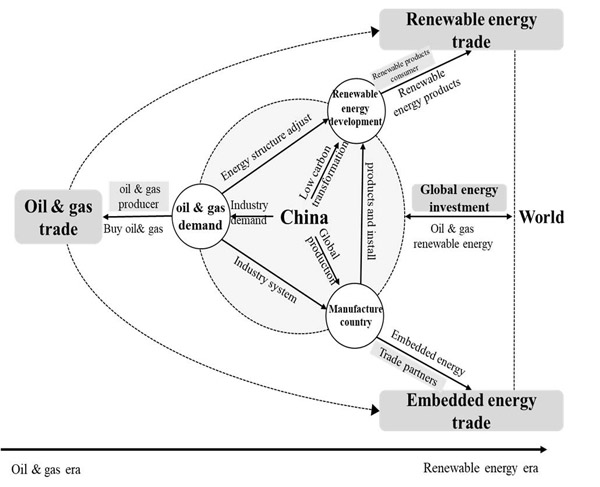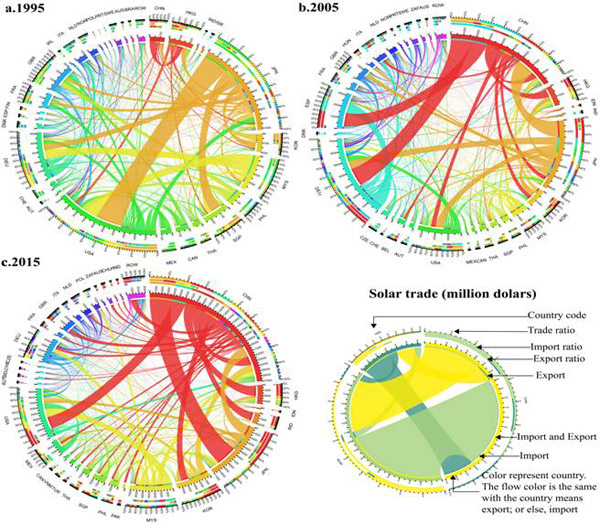New Study Understands the Energy Globalization of China
With the development of renewable energy, the basic logic of the interactions among global energy network has been changed. As Although traditional energy is still the top priority for China, the roles of China in the global energy networks are not only referred to oil and gas trade, but also the renewable energy trade, energy investment and the embedded energy in the manufacturing products exports to the rest of the world.
Prof. YANG Yu, at the Institute of Geographic Sciences and Natural Resources Research of Chinese Academy of Sciences (IGSNRR, CAS), published a paper entitled “Energy globalization of China: Trade, investment, and embedded energy flows” in Journal of Geographical Sciences.
The researcher investigated the basic theoretical cognition of the interactions among global energy network, and analyzed the pattern and the changes of interaction between China and the rest of the world, to better understand China’s energy strategies on trade and investment amid the globalization and the transition.
Based on multi-region input-output analysis, and other technical methods, the results show that, the scope of the interaction between China and the rest of the world has been expanding remarkably under the complex network. The main conclusions are as follows.
First, the most direct logic of the energy interaction between China and the world has been changed. With increasing oil and gas trade with other countries, China has become one of the cores of the global oil and gas trade network.
Second, the trade of renewable energy products has been expanded to more countries and regions. China will play an increasingly important role in the newly-formed global renewable energy trade map.
Third, the scope and field of energy investment have also changed. More investment on energy infrastructure has shifted from oil and gas resources to renewable energy sources to better serve the host country. As a result, the geopolitical attributes of China’s overseas oil and gas investment reduced.
Furthermore, embedded energy trade in China has become increasingly important in the changing interaction. During the progress, energy sources are utilized in the manufacturing products and export to US, Europe, Japan, and other counties all over the world. Energy trade partners expand from oil and gas-producing countries to a broader scope.
The work was supported by the National Natural Science Foundation of China and the Youth Innovation Promotion Association of CAS.
Reference:
YANG Yu, Energy globalization of China: Trade, investment, and embedded energy flows. 2022, 32(3), Journal of Geographical Sciences, DOI: https://doi.org/10.1007/s11442-022-1952-2.

Figure 1: Logic of energy interaction between China and the world (Image by YANG Yu)

Figure 2: Photovoltaic trade interactions between China and the world from 1995 to 2015 (Image by YANG Yu)
Download attachments: